
In this final part of the interview, our interviewees consider the importance of having a knowledge of art history and of the arts, how to encourage creativity, and why art students should attend their schools.

Why is it important for an artist to have a knowledge of art history?
Angel: Edmond Burke, the English 18th-century philosopher, wrote that those who don’t know history are destined to repeat it (‘s mistakes). Why waste one’s time re-living the failures that led to the understanding of compositional and technical principles? The paintings of the past are inspirational and instructive, and paintings are painters talking to each other over the centuries.
Aristides: It helps to have a context for human achievement. Being an artist is a very difficult calling (for all but a few). It is a source of real encouragement to see the artists of the past, not as gods, but as real people like ourselves with hardships and struggles. A knowledge of art history can brush away the dust of the past and help us see ourselves in a bigger picture.
Hardy: Art history gives us clues, as artists, of who we are, what we are, why we are, and how we got that way.
How can parents best aid and encourage the development of their child’s imagination and creativity?
Angel: Send them to a good school.
Aristides: Limit media, provide plenty of opportunities to be outside experiencing nature, and provide exposure to the arts. This is harder then it seems, parents are under a lot of stress – it is difficult to role model a life of imagination when so few of us have the time, resources and support to do so ourselves.
Hardy: By encouraging children, when possible and appropriate, to make decisions. Also by accepting, respectfully, childish outreach into the unknown by means of fantasy.
Can creativity be taught, if so, how?
Angel: Creativity cannot be taught, but it can be nurtured. All human beings are more or less creative. What modern artists need is technical instruction, philosophy and art history.
Aristides: I don’t think it can be taught as much as encouraged and fostered. The environment needs to be stimulating while providing space and time.
Hardy: By helping the individual to accept themselves and dare to make decisions.
Why are the fine arts (painting/sculpture) important?
Angel: Life without the arts – drawing, painting, theater, novels, films, dance – would be bleak indeed.
Aristides: It has many functions and is important for a multitude of reasons. The fine arts provide us a glimmer of an alternate truth – that there is more to a human life than progress or acquisition. We have an innate love of beauty, learning, challenge. and encouragement which can be provided through art. Fine art provides us with a different vision and something greater, something noble to strive towards that can last through the passage of time. It holds up a mirror to our society and is the expression of our culture and becomes a legacy for future generations.
Hardy: Because the fine arts are a part of the total human range of responsiveness with which we as humans are endowed. Not only are painting and sculpture important, but also music, dance, drama and literature are part of the gift with which we are endowed. Much like the fact that muscles grow and function more fully for us in proportion to being used, so our involvement with the fine arts becomes more enriched and rewarding when we open up to it.
Are art and beauty synonymous?
Angel: No
Aristides: I think we would be hard pressed to say that.
Hardy: I think this depends upon how we perceive art and how we perceive beauty. “Beauty is in the eye of the beholder”. Artists of the Ashcan School responded to the beauty of simple, everyday things and happenings. But that does not forbid me my love of the miraculous beauty of a rose.
How do you encourage and help your students find their own creative path?
Angel: We make them aware of the myriad paths within the discipline of Representationalism. We do this by teaching them technique, the play between Conceptualism and Empiricism, the dialectic between the real and the abstract and a study of art history. We also encourage the students to copy paintings (contemporary, as well as pre-21st-century ones) and explore (absorb?) these various voices.
Aristides: We have a fourth year in our Atelier – a thesis year, where students work with mentors (high achieving professionals in the field) as role models. Students put together an artist’s statement, formulate a plan for a body of work based solely on their artistic vision and have an academic year to create it. The work is then placed on exhibition. We then arrange for the graduates to have their first professional show within a year after leaving the program.
Hardy: Belief in and acceptance of one’s self is crucial, in my opinion, as a bedrock for creativity. Combine this with the daring to make decisions – to be able to choose the superior between two whatevers that are almost equal, almost identical, is also important. Sometimes it is better to replace “why” with “why not?” When planning student projects, I prefer to have students take responsibility and try out their ideas. If a certain set-up is not quite working. I suggest some possible advice, but it is up to the student to reach final decisions. Even if (very rarely) something doesn’t work, there is much that can be learned that will enrich future projects.
Why should art students attend your school?
Angel: I honestly think that we are one of the best. As well as thorough training, we have Florence and the rest of Italy to draw on (Rome is an hour and a half away by train, and Venice is three hours away). The atmosphere at Angel’s is convivial and friendly, while the quality of instruction is very high – all one has to do is look at the student galleries on our website: www.angelartschool.com/galleries.html. In addition, we are one of the very few academies that teaches the business side – professional painting means painting for a living – as well as the creative.
Aristides: Art students should attend some form of rigorous education to become challenged to produce their best work. There are many great schools out there right now. Aristides Atelier is located in Gage Academy: www.AristidesAtelier.com and as such we benefit from a lot of cross fertilization.
Hardy: Because we help and encourage students in how to be effective in their artwork, understand themselves better and prepare for today’s professional art world. We train champions. The core of good instruction, in my opinion, should be accessibility and effectiveness (another way of saying dependableness). In line with this way of thinking. I have in many instances invented my own ways of presenting time-proven traditional art technology. The School of Boston did not have a strangle hold on important art procedures and viewpoints. My training came down to me from the Julianne Academy in Paris, plus the Royal Academy in Brussels and the Superior Institute in Antwerp.
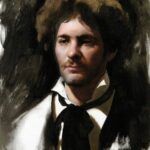

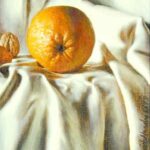
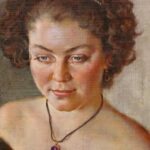
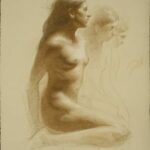
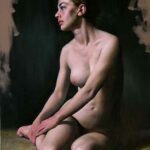
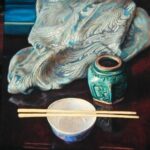
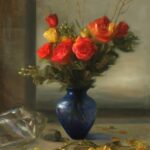
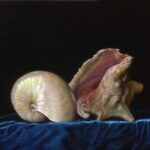
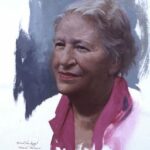
Leave a Reply